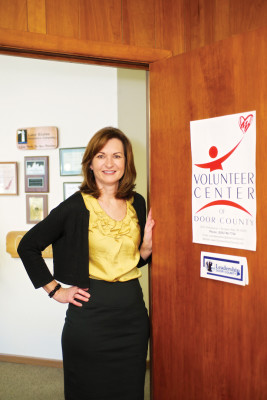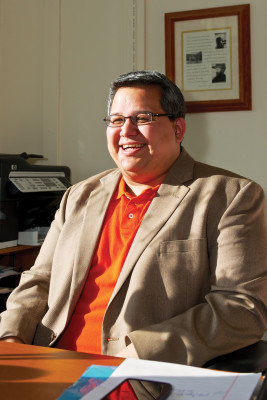Charity Defense Council launched to Redefine how we Judge Charitites
- Share
- Tweet
- Pin
- Share
New York Governor Andrew Cuomo is fighting to reign in executive compensation, going so far as to create a task force to review compensation packages for a special class of the state’s executives.
In an era where the gap is large between rich and poor, and in which the middle class has seen incomes stagnate, the order was met with widespread support.
Before you let your mind travel to the startlingly rich compensation packages doled out on Wall Street, check yourself. Those who earned Cuomo’s ire are the state’s non-profit directors.
The task force would investigate “executive compensation at all non-profit organizations that receive taxpayer subsidies from the state.”
This did not sit well with Dan Pallotta, author of Uncharitable and Charity Case, two books that make a compelling case to redefine the way society judges charities. In 2012 Pallotta founded the Charity Defense Council, the first large-scale organization to push back at those who criticize charities solely by examining balance sheets.
While most people would support Cuomo’s decision to take a closer look at how non-profits are compensating their leaders, Pallotta was incensed, calling the measure discriminatory.
That’s because the State of New York doled out $35.8 billion in contracts between January of 2010 and March of 2011, and only $3.2 billion worth of contracts went to non-profits. The remainder went to for-profit companies and agencies, companies who would not be subject to the same oversight.
“Do they not also have a ‘special obligation to the taxpayers that support them’?” Pallotta wrote in a letter to the governor and state representatives, referencing the governor’s own reasoning for reviewing non-profit compensation.
This was one of the first steps forward for the Charity Defense Council, an organization Pallotta hopes to build into one that can change the perception of non-profits and their employees, and ultimately create a climate in which they can accomplish their mission.
In October I attended Pallotta’s first Change Course conference in Boston, in which he outlined the purpose of the organization and why it’s necessary (see sidebar).
Pallotta is not a rah-rah, thumping drumbeat of a motivational speaker. He’s measured, patient, contemplative – traits that don’t always come through in his impassioned, often frustrated writing.
He is a visibly sensitive man whose speeches are interrupted by pregnant pauses and occasional tears, especially when he talks about friends he lost to AIDS (which inspired his turn to the social sector to raise money to fight the disease) and the discrimination he has faced (Pallotta is gay).
Some see him as a sort of profiteer, seeking to prey on people’s generosity to charity to make more money. Pallotta argues that his vision for charity isn’t about a money grab, but rather an honest attempt to help charities solve society’s biggest problems.
“We acknowledge that capitalism is powerful, and that it leads to massive inequality,” he says. “But we refuse to let the tools of capitalism rectify the inequalities in society.”
By acknowledging the professionalism and value of workers in the non-profit sector, he says, we make those organizations stronger and more accountable. The present paradigm indoctrinates the idea that choosing between working in the private sector or working for social good is an either/or proposition. As Pallotta wrote in a post for the Harvard Business Review, “either you go into charity and give up money, or you go into business and give up meaning.”
“I want to liberate you from the preconceptions you have about making a difference,” he told the 40 or so people who had come from around the country to the Change Course conference.
With the Charity Defense Council he hopes to chip away at those preconceptions on a national scale. I talked to several non-profit leaders in Door County to see if they encounter such perceptions on the peninsula and whether Pallotta’s new organization can make an impact.
Amy Ludwigsen
Executive Director, Door Shakespeare
Amy Ludwigsen took over Door Shakespeare in the spring of 2012. Though the theater is 13 years old it has long been on uncertain footing, leaving Ludwigsen to inspire confidence in donors that it will be around for the long haul. Part of that confidence comes through making the public perceive theater as a profession, said the American Folklore Theatre alum who earned her degree in acting from Northwestern University and her Masters in classical and contemporary theater from the Royal Conservatory of Scotland.
“You have to do everything you can to legitimize the arts as a profession,” Ludwigsen said. “When you go to a doctor you have no doubt that that person is a professional. In the arts we have to install that same faith in our donors. With everything being so political today the verbiage is terribly important. In charity we’re not asking for money so we can play and have a hobby. We’re asking for money to bring professionals here to bring a cultural opportunity to the community.”
She said there is a mindset that any organization that receives donations should be volunteer-based and all money should be given away.
“But take Door Shakespeare,” she said. “This isn’t anybody’s side job. We all went to school for this. If you don’t invest in the organization you’re never going to get past a certain point, never going to reach your goals.”
Pam Seiler
Executive Director, Volunteer Center of Door County
Pam Seiler said the reluctance of the non-profit world to tout its importance holds it back.
“We market ourselves so poorly because people don’t feel they have the right to do it,” Seiler said. “It’s like we don’t have the right to toot our own horn. Before I started working at the Volunteer Center two and a half years ago I didn’t even know it existed.”
Seiler also serves as the Chairperson of the Door Community Non-profit Group which meets monthly to discuss issues non-profit directors are running into, to hear from speakers, and to learn from each other. In that group she often hears leaders discussing frustrations dealing with the very issues Pallotta outlined.
Seiler said non-profits are often caught in no-win situations.
“God knows that Door County businesses are incredibly generous and we need to support them,” she explained. “But boards and public perception can make that hard. Non-profits go to local businesses for donations and support. Then they turn around and head to Green Bay to buy supplies at Sam’s Club. But, if those same businesses or donors found out the non-profit was paying more to shop locally, some people would question why they’re wasting money that could be saved shopping at Sam’s Club.”
Bret Bicoy
Executive Director, Door County Community Foundation
“I’m in love!” Bicoy said when I asked him about the Charity Defense Council. “I donated right away.”
A survey by New York University’s Brademas Center for the Study of Congress in 2008 revealed that 70 percent of Americans believe non-profits waste “a great deal or fair amount of money” and only 10 percent believe charities are “very good” at spending money wisely. It’s a perception that riles Pallotta’s anger, and one that Bicoy is particularly sensitive to.
“Where is the waste?” Bicoy asked. “People come to us with these assumptions, but if you visit almost any non-profit in Door County you’ll find them working in cramped back offices, using outdated equipment and old donated furniture. And that’s OK, but there’s certainly not this great waste.”
Bicoy, like many in the sector, speaks with pride of all the people in the charity world who do so much with so little. But Pallotta questions whether it’s a good thing to trumpet the sector’s martyrdom.
In fact, if non-profits are wasteful in any way, it may in fact be just the things that they take pride in – doing without, with less, or with old tools. Is working with old technology costing non-profit employees valuable time? Is the lack of a marketing budget or acumen costing them opportunities to reach valuable donors? Is an office full of hand-me-down furniture in a shoddy old building putting an unprofessional face on the organization and thus costing it respectability and donations?
At the Charity Defense Council Pallotta’s aim is to get people to consider the other side of such questions, to make the indoctrinated question not “what is the overhead percentage of the non-profit” but instead, “is the non-profit achieving its mission?”
Though he is as staunch a defender of the non-profit sector as you will find, Bicoy admits that his instinctive reaction when hearing of a non-profit director earning nearly a million dollars in compensation is to ask “Wow, are they really worth it?”
He balks at the idea that anybody – non-profit or for-profit – is worth a salary of a million dollars, let alone tens of millions. But he also believes that while those in the non-profit world shouldn’t work as paupers, they should be expected to work for less than in the private sector.
“We have to recognize that we are not for-profit, and we’ve decided not to go into that for-profit world,” he said. “We survive but for the generosity of others, so we have a responsibility to that generosity, whether it be from private donors or government grants that come from tax dollars. It’s not our money, that’s what it fundamentally comes down to. The money we use comes from the community at large.”
Inge Bacon
Certified Public Accountant and
Chairperson, Boys & Girls Club of Door County Board of Directors
Bacon has served on 39 boards or committees at non-profits around Door County over the last 35 years. As an accountant she is often tabbed to oversee the finances of organizations.
She admitted that many of Pallotta’s ideas were new to her, and she quickly tapped into memories of times that public perception has trumped cause when a board was discussing how to meet a need.
“I’ve been in meetings where we’ve wanted to expand a program because there was a need,” she explained. “To do so we’d need to add a staff person, and that would increase overhead. Then somebody will raise the question of how that will look to donors? Will they see it as taking dollars away from programs?”
In social service organizations, much of what they do comes in the form of people, not products or entertainment. That’s a point Pallotta hones in on, even creating t-shirts that say “I’m overhead” and launching an awareness campaign in which non-profit employees look into the camera and say simply, “I’m overhead,” conjuring the famous “I’m Tiger Woods” ads Nike created 15 years ago.
When a well-run business identifies a need or opportunity, it invests appropriately. Even a great non-profit is forced to consider public and donor perception when it makes the same decision.
“It’s not that non-profits shouldn’t be good stewards of donor money,” she said, “but there’s a difference between being a good steward and going for the cheapest option. Being a good steward is fulfilling the mission in the best way possible, not the cheapest.”
“We evaluate based on how low can they go with their overhead costs,” she continued. “That doesn’t tell you whether or not they’re accomplishing anything or solving any problems. That’s what we should be reporting on the 990. That should be the important part for Guidestar [a charity rating site] and the IRS.”
Bacon, like many in the non-profit world, never considered that we could have a different definition of what charity work should be until she reviewed the council’s website.
“The value of the Charity Defense Council comes if they are able to achieve the goal of changing the perception,” Bacon said. “I do think that’s important. The media does like to focus on perceived abuses and the high compensation issues. The public absorbs that perception and chews on Congress to expose those abuses. Then we get ratings and tax forms geared to those issues. If the perception can change, I think that’s critical.”
The 5 Pillars of the Charity Defense Council
Form a Charity Anti-Defamation League: To respond and correct inaccurate reporting on the sector and individual charities
Launch a daring ad campaign: To change the way the public thinks about charity
Create a Legal Defense Fund: To challenge counterproductive regulations and laws that constrain the ability of charities to make an impact
National Civil Rights Act for Charity and Social Enterprise: To create a thoughtful statutory code designed to help charities change the world
Organize the sector: To do grassroots organizing to bring the non-profit sector together as one powerful voice
5 Steps to Change Perceptions
By Myles Dannhausen Jr.
Our Door County non-profits may not be grappling with million-dollar compensation packages, but many are grappling with public perceptions that hold them back from taking bold steps. Here are four ideas adapted from conversations with Dan Pallotta that could help peninsula non-profits change perceptions and achieve their mission.
- Swing big. In the non-profit world we tend to play it safe, creating the same fundraisers that have already been done over and over (check out the number of golf outings we have in Door County). We need to swing big sometimes, which means boards, donors, and the public have to accept some misses.
- Stop being martyrs. To change the perception of non-profits, non-profit professionals must change their perception of themselves. That means less begging, more proving, more working together to mitigate overlap of services and goals. Find better ways to illustrate the value of non-profit services, not just the need.
- Challenge your organizations. Solving problems is not about “having something to do.” We need volunteers and their contributions are incredibly valuable, but the goal of our non-profits is to solve our greatest problems or to provide community services and cultural experiences that otherwise would not be available. Non-profit boards and organizations must be constructed – and decisions made – with that in mind, not appeasing parents, donors, or pet projects.
- Challenge your donors. Don’t bow to whims. High-value donors will appreciate when you challenge them and provide evidence of where their money will best be spent, even if that’s in building infrastructure for the future. It’s not as flashy as putting a name on a building, but in many cases, it’s more important and makes a more lasting impact.







